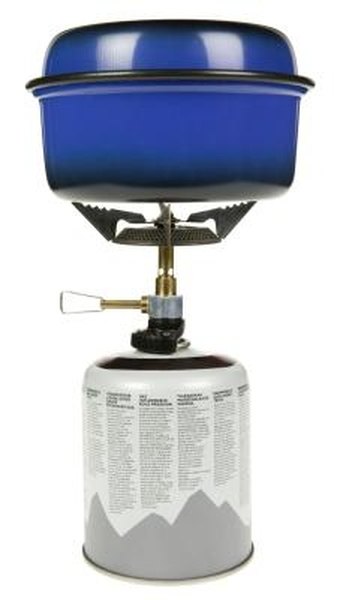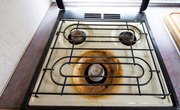
Propane gas is a cheap, clean and efficient cooking and heating fuel. Used for everything from lighting an outdoor campsite to heating homes and industries, propane is a fuel that is also very safe when handled correctly. Proper operation of a propane stove, heater, lantern or other device includes regulation of the flame height and color to ensure nearly complete combustion.
Items you will need
Propane lantern or appliance with adjustment knob
Match or spark ignitor
Common Steps
Turn on the propane stove, grill, furnace, heater or lantern using the appliance's fuel knob or flame adjuster control. The precise location of this control varies by manufacturer. They are usually found on the front of kitchen and camping stoves, on the top of propane heaters, and just below the glass mantles of propane lanterns. More complex appliances, such as propane kitchen stoves and furnaces, have electronic ignition devices requiring no input from a user.
Light a wooden kitchen match or a spark ignitor. Apply the match's flame to the fuel outlet. If using a built-in spark ignitor incorporated into a kitchen stove, a house furnace, certain outdoor cooking grills, or a portable heater, the propane should ignite automatically.
Note the color and shape of the propane's flame. The major portion of the flame should be an electric blue color with only a hint of yellow or orange at its tip. Use the fuel control knob to either raise or lower the height of the flame and to ensure it remains the correct color. A flame containing too much yellow indicates incomplete combustion that wastes fuel and presents a carbon monoxide hazard.
In the case of propane kitchen ranges and house furnaces, adjustment of the flame should be performed by an appliance professional only.
References
- Coleman Canada: Propane Stove: Instructions for Use: Lighting, p 6.
- Appliance411: FAQ: What should my gas range's flame look like?
- Coleman: Troubleshooting Coleman stove that lights with a large yellow flame
- Texsport: Instructions: Mantle Propane Lantern
- Propane 101: LP Gas Furnace Installation, Service, and Repair
Writer Bio
Susan Kerr began her writing career as a food columnist in 1987 before moving to business journalism as a reporter and managing editor in the Penn State area. Since then, Kerr has contributed content to military-related magazines, not-for-profit websites and other online media. In addition, she writes a weekly column for her hometown newspaper



